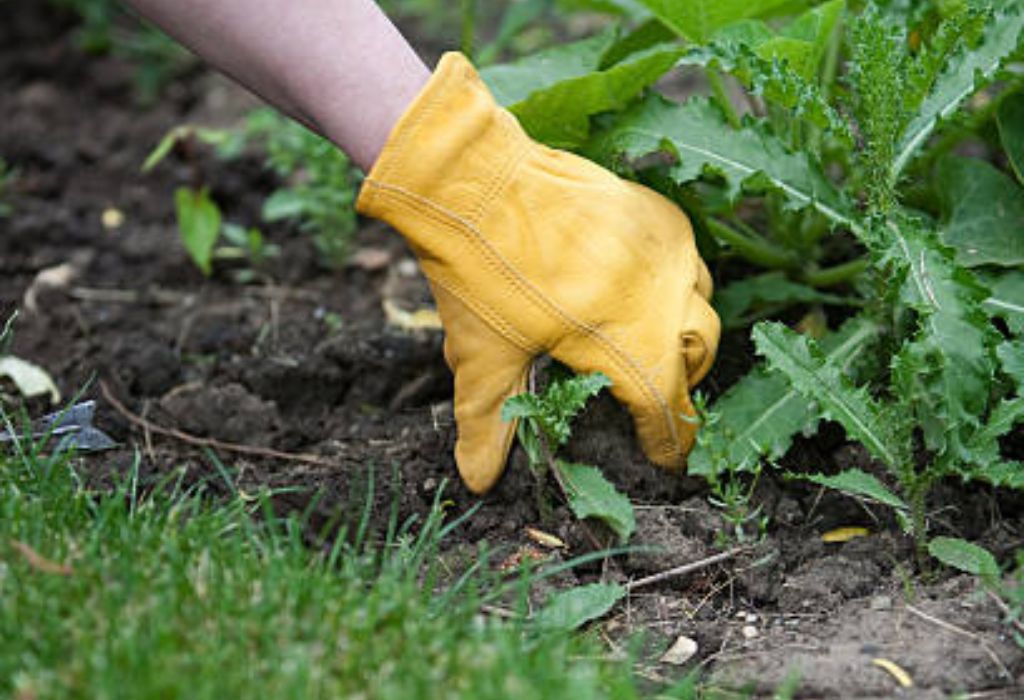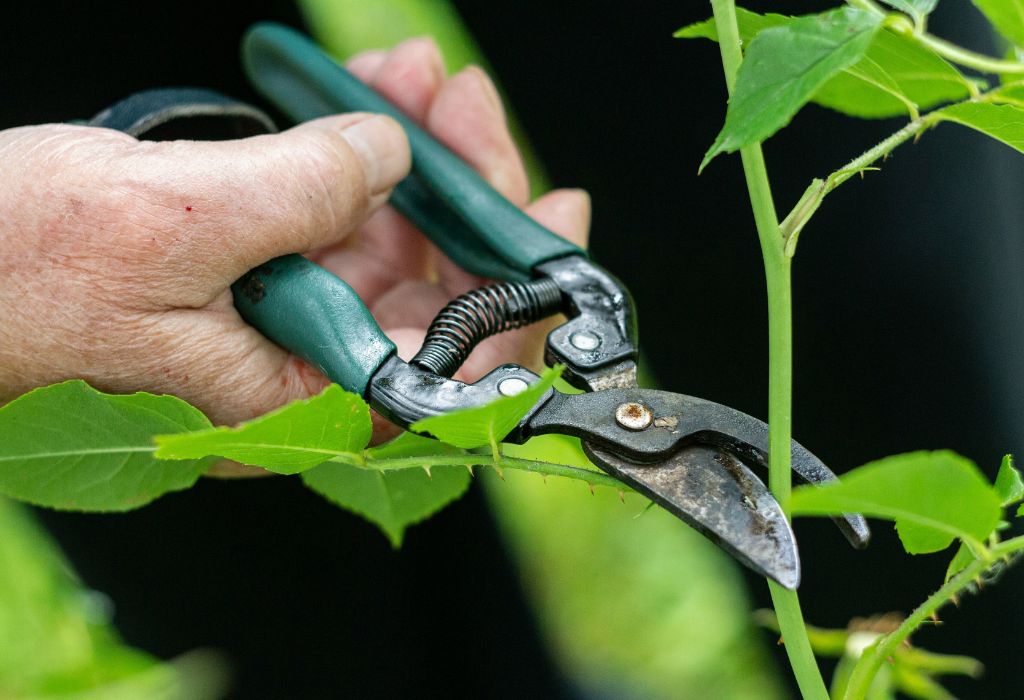You’ve planted your garden with care, watered regularly, and eagerly waited for flowers and vegetables to grow. But instead of healthy plants, you’re greeted with unwelcome intruders—weeds. These fast-growing invaders compete for nutrients, water, and sunlight, leaving your garden stressed and less productive.
Studies show that weeds can reduce garden yields by 30–50% if left unchecked. On top of that, the average gardener spends over 120 hours a year pulling weeds—time that could be spent enjoying the garden instead of fighting it.
The good news? You don’t have to surrender your garden to weeds. In this guide, you’ll learn 10 proven tips to keep weeds out of the garden in 2025. From mulching to crop rotation, these eco-friendly techniques will help you create a healthier, more manageable garden.
I. What Makes Weeds So Tough?

Weeds are persistent because nature designed them to survive almost anywhere. Here’s why they’re hard to control:
- They grow incredibly fast, often faster than crops or flowers.
- Many produce thousands of seeds—dandelions alone can release 15,000 seeds per plant.
- Weed seeds can stay viable in the soil for 5–10 years, waiting for the right conditions.
- Strong root systems allow many weeds to regrow even after cutting.
This means weeds are not just occasional pests—they’re natural survivors. That’s why prevention and consistency are essential.
II. 10 Proven Tips to Keep Weeds Out of the Garden
1. Mulching Effectively
Mulch is one of the most powerful weed-fighting tools. By covering bare soil, it blocks sunlight and prevents weed seeds from sprouting.
- Organic mulches (straw, shredded leaves, wood chips) enrich the soil as they break down.
- Inorganic mulches (gravel, landscape fabric) last longer and provide long-term coverage.
- Apply a layer about 2–3 inches thick to reduce weed growth by up to 80%.
Pro Tip: Keep mulch away from plant stems to avoid rot.
2. Dense Planting
Weeds thrive in open spaces. By planting vegetables, flowers, or shrubs closer together, you create natural shade that prevents weeds from taking root.
- Companion planting (like lettuce under tomatoes) doubles as weed suppression and crop support.
- Garden beds that are full and leafy leave no room for unwanted invaders.
3. Ground Covers
Ground cover plants form a living carpet that keeps weeds from sprouting.
- Clover adds nitrogen to soil while blocking weeds.
- Creeping thyme covers soil with low, dense foliage.
- Creeping Jenny is another fast-spreading cover for weed suppression.
Ground covers work especially well in borders, pathways, and flower gardens.
4. Raised Beds and Containers
Raised beds naturally reduce weed problems because you control the soil. Container gardening takes it even further by eliminating most outside weed seeds.
- Use clean, high-quality soil free of weed seeds.
- Install raised beds with barriers underneath to prevent grass and deep-rooted weeds.
- Containers let you garden almost weed-free, especially for herbs and small vegetables.
5. Soil Solarization
This method uses the sun’s heat to sterilize soil and kill weed seeds.
- Water the soil deeply.
- Cover with clear plastic during the hottest part of summer.
- Leave it for 4–6 weeks to “bake” weed seeds and pathogens.
After solarization, your garden bed is refreshed and much less weedy.
6. Smart Watering
Watering techniques play a huge role in weed growth.
- Use drip irrigation or soaker hoses to target plant roots only.
- Avoid overhead watering that spreads moisture everywhere, encouraging weeds.
- Water deeply but less frequently so desired plants thrive while shallow-rooted weeds struggle.
7. Hand-Pulling and Hoeing
Simple but effective, especially if you do it regularly.
- Weed after rain when the soil is soft for easier root removal.
- Pull weeds before they flower and seed to stop future growth.
- Hoe shallowly to slice off young weeds without disturbing deeper seeds.
Spending just 10 minutes every other day can prevent weeds from ever becoming overwhelming.
8. Use of Natural Sprays
If weeds sneak into cracks or paths, natural sprays help.
- Vinegar mixed with dish soap burns weeds on contact.
- Boiling water works instantly on small weeds in walkways.
- Flame weeding devices scorch weeds quickly, though caution is required.
These methods are best for paths, driveways, and non-garden areas.
9. Seasonal Maintenance
Weeds grow in every season, so adapt your approach.
- Spring – Apply mulch early before weeds sprout.
- Summer – Pull weeds weekly and refresh mulch.
- Fall – Plant cover crops like rye or clover to enrich soil and block weeds.
- Winter – Clean beds to remove weed seeds and debris.
Seasonal timing makes weed control easier and more effective.
10. Cover Crops and Crop Rotation
Cover crops aren’t just for farms—they work wonders in home gardens.
- Rye, clover, and alfalfa suppress weeds while improving soil.
- Crop rotation prevents weeds from adapting to one crop type.
- Both methods cut weed pressure by 50% or more while boosting soil fertility.
III. Mistakes to Avoid in Weed Control

- Over-tilling soil, which brings buried seeds to the surface.
- Letting weeds flower—just one plant can spread thousands of seeds.
- Using compost or mulch that contains hidden weed seeds.
- Depending only on chemical herbicides, which can harm soil and pollinators.
IV. FAQs on Weed Prevention
- What kills weeds permanently without chemicals?
A combination of mulch, ground covers, and consistent hand-pulling. - Can vinegar kill weeds in a vegetable garden?
Yes, but use carefully—it can harm nearby plants. - How often should I weed during the season?
Weekly checks prevent weeds from spreading. - Is mulch enough to prevent all weeds?
Mulch blocks most weeds but should be refreshed annually. - Do raised beds really reduce weed growth?
Yes, because you start with clean soil and use barriers underneath.
V. Statistics Every Gardener Should Know
- Weeds can reduce yields by 30–50% in home gardens.
- Gardeners spend more than 120 hours per year removing weeds.
- A single dandelion can release up to 15,000 seeds.
- Mulching can reduce weed growth by 70–80%.
- Cover crops reduce weed presence by 50% or more.
Conclusion
Weeds may be tough, but they’re not unstoppable. With the right prevention methods—mulching, dense planting, cover crops, and smart watering—you can cut your weeding time dramatically and boost garden health.
Weed control is a long-term strategy. The more consistently you prevent weeds, the less time you’ll spend fighting them. By following these 10 proven tips, your 2025 garden can stay healthy, productive, and beautiful—without weeds taking over.
I’m Maya L. Greenwood, a lifelong plant lover who believes anyone can grow something beautiful with the right guidance. After years of testing soil mixes, pruning methods, irrigation tricks, and pest-safe solutions, I started EasyGardenTips.com to turn hard-won lessons into step-by-step advice. From seed starting and container gardens to composting and seasonal checklists, my goal is to make gardening simple, sustainable, and fun.
